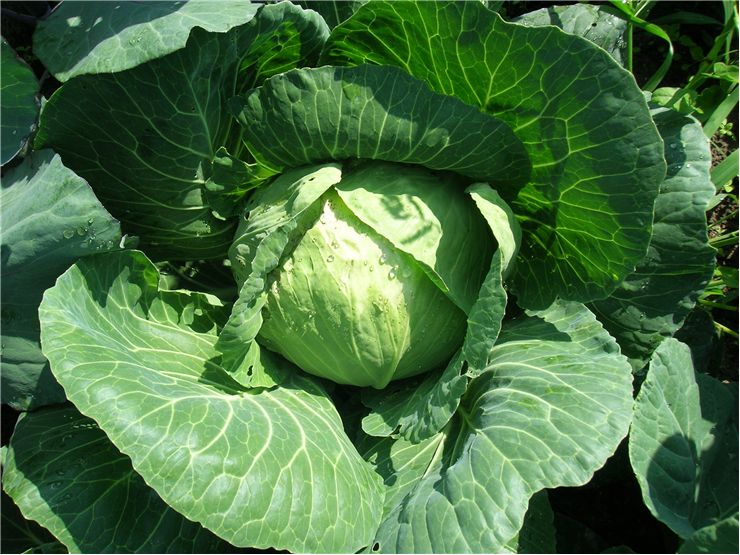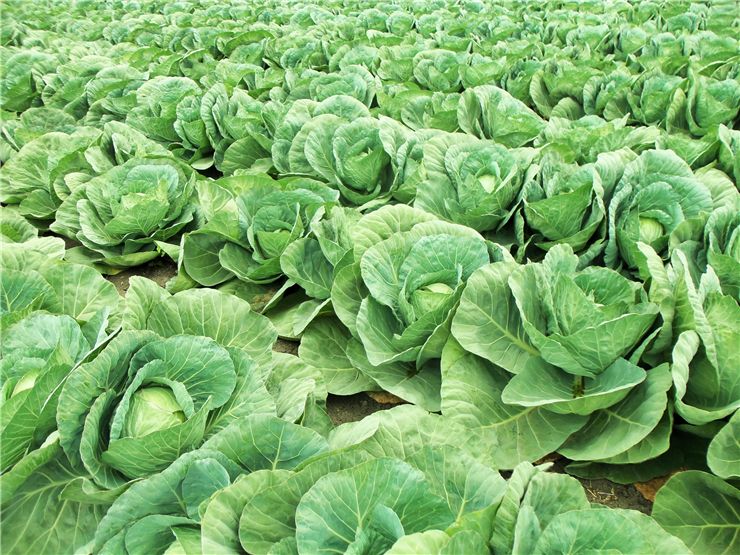History of Cabbage - Where does Cabbage come from?
Cabbage is a leafy vegetable from the wide family of "brassicas". It is grown annually, and we eat its dense green or purple leaves in many different dishes. Head of cabbage, which can grow from 0.5 to 4 kilograms, is rich in vitamins and minerals, has almost no fat and is very rich in fiber which makes it very healthy to eat.
We don't know for certain where cabbage appeared for the first time because many plants belong to the family of "brassicas", they grow around the world and today's cabbage descends from them. The most common theory is that The West cabbage is domesticated in Europe some 3,000 years ago from its wild predecessors that had thick leaves that retained water which allowed them to survive in colder places with less water. In the East, cabbage is used since the 4,000 BC and was cultivated in North China. These variants were nonheading cabbages and were domesticated by Celts of central and western Europe. Mesopotamia also knew about cabbages while the ancient Egyptians didn't cultivate cabbages until the times of the Ptolemaic dynasty. By the time of the early Rome, cabbage became common food in the Egypt along with other vegetables. Theophrastus (371 – 287BC), which is considered “father of botany”, mentions cabbage in his texts, so we know that Greeks knew about them at least as early as 4th century BC. The headed cabbage Greeks called “krambe” while the Romans called it “brassica” or “olus”. Tales say that Diogenes ate nothing but cabbage and drank nothing but water. In Rome, cabbage was considered a luxury and many regarded it as better than all other vegetables. They also used it for medicinal purpose as relief from gout, headaches and the symptoms of poisonous mushroom ingestion. Some even advised the use of cabbage-eater's urine, in which infants might be rinsed. Pliny the Elder wrote about seven known variants of cabbage at that time which include Pompeii, Cumae, and Sabellian cabbage. Except for nourishment, Ancient Egyptians and Romans ate larger amounts of cabbage before the night of drinking which allowed them to drink more.

During the time of Charlemagne (Charles the Great, 8th century), cabbages were directed to be cultivated in the “Capitulare de villis”, a text that gave rules and regulations on how to manage the lands and laws in the country.
The first round-headed cabbages appeared in 14th-century England, and they became more and more popular as cuisine throughout Europe. Proof for this we find in manuscripts of that time where they appeared in illuminations and in other texts where they were mentioned as the food of both wealthy and poor. From Europe, cultivated variants of cabbage spread to Asia and Americas. It was brought to India by colonizing traders from Portugal somewhere between a 14th and 17th century, and it was unknown in Japan until the 18th century.
The first cabbage in America was brought by a French explorer Jacques Cartier on his third voyage 1541 – 1542. Cabbage became necessary on long ocean journeys because it has high amounts of vitamin C which prevent scurvy. Ship doctors (like for instance doctor on captain Cook's ship that sailed in 1769) used sauerkraut (cabbage preserved in brine) to treat wounds of sailors and prevent gangrene.
Today, China is the largest producer of cabbage, followed by India and Russia, which is the biggest consumer of cabbage.
Around the world, cabbage is prepared in different ways. While it can be eaten raw, as a salad, cabbage can be steamed, pickled, stewed, sautéed or braised. Sauerkraut and kimchi are the most popular pickled variants while the coleslaw is one of the most popular salads.


